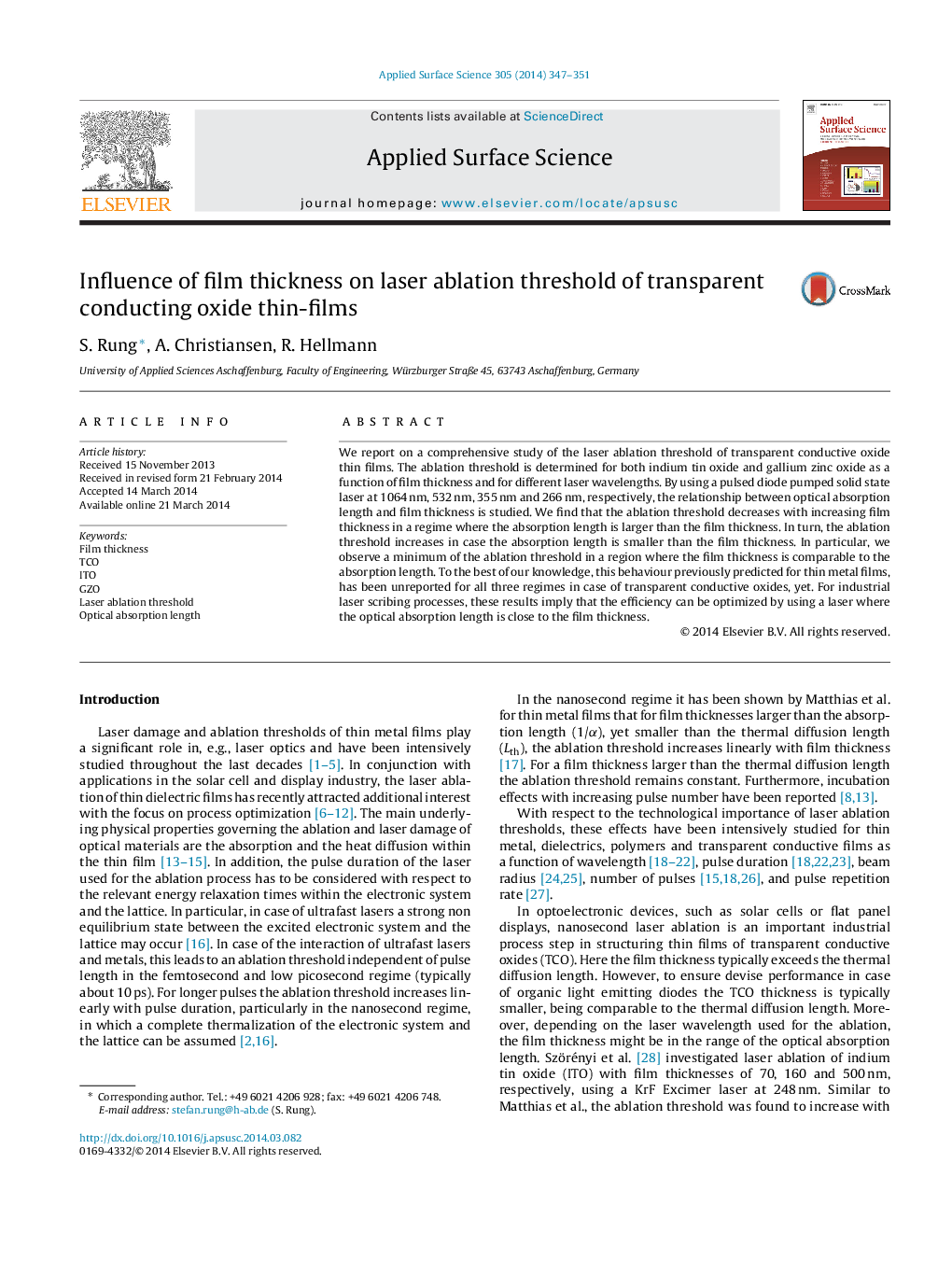| Article ID | Journal | Published Year | Pages | File Type |
|---|---|---|---|---|
| 5350308 | Applied Surface Science | 2014 | 5 Pages |
Abstract
We report on a comprehensive study of the laser ablation threshold of transparent conductive oxide thin films. The ablation threshold is determined for both indium tin oxide and gallium zinc oxide as a function of film thickness and for different laser wavelengths. By using a pulsed diode pumped solid state laser at 1064Â nm, 532Â nm, 355Â nm and 266Â nm, respectively, the relationship between optical absorption length and film thickness is studied. We find that the ablation threshold decreases with increasing film thickness in a regime where the absorption length is larger than the film thickness. In turn, the ablation threshold increases in case the absorption length is smaller than the film thickness. In particular, we observe a minimum of the ablation threshold in a region where the film thickness is comparable to the absorption length. To the best of our knowledge, this behaviour previously predicted for thin metal films, has been unreported for all three regimes in case of transparent conductive oxides, yet. For industrial laser scribing processes, these results imply that the efficiency can be optimized by using a laser where the optical absorption length is close to the film thickness.
Keywords
Related Topics
Physical Sciences and Engineering
Chemistry
Physical and Theoretical Chemistry
Authors
S. Rung, A. Christiansen, R. Hellmann,
